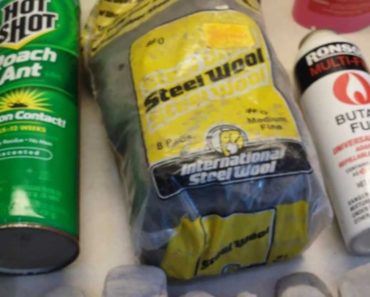Protein is, without doubt, the foundation of a good survival diet. But in an unfamiliar environment, like the wilderness, you’ll have to work for it. Vs. visiting a store like you could in the city.
Hunting small game is therefore a worthy skill to master if you plan to spend an extended period in the wild. Not only will it keep you well-fed, with valuable meat, it’ll help to boost morale. Since nothing beats that feeling of a perfect kill-shot. Plus, it’ll give you a strong sense of independence, security and dominance over the environment.
Squirrel hunting is an old skill that’s fast becoming a thing of the past. As deer, boar and other big game prey steal the limelight. In fact, many hunters these days won’t even consider bagging these pesky critters. But is this bad news? After all, it’ll only make your squirrel hunting skills more valuable when SHTF. When other prey get scarce. Even better, you’ll be surprised at how good it tastes. Once you learn to prepare it.
Even better, it’s not as expensive to hunt squirrels as other animals. With minimal gear needed. These small, elusive creatures also make great target practice.
Now, before you plan your first hunt, you should know that there are several subspecies in North America. While those you should target include the eastern fox and eastern gray squirrel since these are the most abundant.
How to tell them apart
To differentiate between these two species you should first look at their size since fox squirrels tend to be larger. The problem with both however is they rarely reach their full growth potential since they’re the preferred prey of many predators.
In terms of color, gray squirrels are a solid gray with small hints of brown and a white underbelly. While fox squirrels are mostly red-brown in color with hints of gray on their back and an orange-red underbelly.
Range and habitat
Gray and fox squirrels can be found throughout North America. From New Brunswick, to California, Florida, and British Columbia. If you live in the Southwest desert areas, nevertheless, you’re out of luck since such squirrels prefer the forests of Arizona and New Mexico. In general, they also prefer conifer woods, with nut-producing hardwoods, but you can also find them in pine forests since they love to eat pine cones.
The favored hardwoods of squirrels are:
- Hickory
- Oak
- Beechnut
- Pecan
- Walnut and black walnut
- Osage orange
Squirrels spend most of their time in the canopy above the forest floor and live in mature trees with an open understory. This creates a safe environment for them since they will spend a good part of the day on the ground searching for food and places to hide it.
They also nest in trees, but will prefer the safety of a den or hollow if available. If you have good eyesight you might even be able to even spot their nests, made of twigs and leaves, built into the forks of trees. However, it is almost impossible for a beginner hunter to spot these since they are well camouflaged during the spring and summer seasons. During autumn, however, when leaves start to fall, these nests are much more visible.
Squirrels will hoard a lot of food. Especially since they often forget where they hid their supplies. For this reason, they are movers of seeds and thereby responsible for forest expansion even beyond the normal range.
As a side note, you should keep in mind that gray squirrels prefer smaller forested areas vs. fox squirrels that live and thrive in large acreages of wood.
Gear needed for hunting squirrels
Most hunters use shotguns or the trustworthy .22 rimfire but pistols have also become a trend in recent years.
Shotguns are the favored guns for many during the early hunting season since trees are covered with vegetation, and the dense leaves make accuracy difficult. However, in the fall, a .22 caliber is hard to beat since your line of sight is no longer obstructed by dense vegetation.
Regardless of what you use, make sure it’s accurate. The same goes for you. Since even the most accurate gun is useless if a hunter doesn’t put in the practice needed to finetune shot-groups into a target the size of a golf ball. Which is also, pretty much, the size of a squirrel’s head.
You should also avoid body shots and always aim for the squirrel’s head to avoid damaging body meat. It goes without saying that every ounce of meat counts in a survival situation.
You may also prefer to use a single-shot or a bolt action rifle or even a semi automatic but, whatever your choice, you’ll need to practice, and do so as often as possible. Some rely on iron-sight shooting, but you’d need to have quite some experience out in the field for a precise kill shot to work. For beginners, nothing beats a powerful scope.
If you go with a shotgun, anything from a 12 gauge down to a .410 will do the job when you hear the squirrels chirp above your head in the foliage and see that fluffy tail pop up here and there.
The art of hunting squirrels
First, squirrels have excellent eyesight and hearing. Second, they’re social animals and frequently communicate, signaling danger long before you spot them. Sneaking into the woods without notice is thereby impossible. Instead, the trick is to use the squirrels’ curious nature against them.
To do this, check for signs of activity like empty nutshells under a tree and listen for movement since squirrels are quite noisy animals, especially when they chase one another. Even more, their chewing on the hard shell of nuts is quite a distinctive sound, and their running on the leaf-covered forest floor is often mistaken with the noise deer makes by some inexperienced hunters.
When you enter the forest for the first time, you should also seek out nut trees since these are the favorite feeding grounds of squirrels. Look for the nest as well, and use your hearing to spot that distinctive chirping sound. Furthermore, don’t walk around in even steps since they can tell the difference between a four-legged and a two-legged walk. Instead, take two or three steps and stop, take three more steps, pause again, do so while walking in different directions, and never move in a straight line.
Always listen to the environment too, and look ahead for activity. When a squirrel spots your presence, they will stop whatever they’re doing and put the tree between you and them. If you notice this, rather than moving forward, stop and squat down. You can even lean against a tree and stay still for a few minutes. This will work in your favor since, most times, the intense curiosity of the squirrel will give it away.
You may have to stay silent for 10 minutes or so, but eventually, they’ll make their presence known as they check to see if it’s safe for them to resume their activity. This will provide you a great opportunity for a shot.
Once you take a shot and have a successful kill, don’t rush to it either. Instead wait a little longer as other squirrels may emerge. Patience will often reward you with a second squirrel.
As a side note, you don’t need camouflage clothing either. Although wearing dull colors that blend into your environment can help. So that’s an expense you’ll avoid. However, I’d first recommend you check your state’s laws on wearing hunter orange. Since this can save your life in an area frequented by hunters.
Squirrel dressing
Once you’ve bagged your squirrel, avoid leaving it in a hot and humid place as this will encourage contamination, and instead try to keep it in a cool-dark place. You should also clean it as soon as possible.
Keep in mind squirrels are usually more difficult to skin compared to rabbits due to their tough and thick skin that won’t give way easily. This is one of the main reasons hunters avoid hunting squirrels since the cleaning step is not an easy one compared to other game.
Breaking down a squirrel would require a fillet knife and a heavier fixed blade to cut through the joints. When you separate the front legs, you should feel for the shoulder blade and cut right behind it. The front legs are not connected to the body with bone, and are instead held together by muscle tissue.
To separate the hind legs, cut where the thigh meets the body until you get the bone. Twist the leg, and you will notice a slight crack or pop. This indicates the hip joint where the pelvis and the thigh connect. Cut through this joint to separate the legs.
Once you separate the legs, move onto the back. Here, some prefer to keep the back whole while others cut it in two. I recommend cutting the spine between where the ribs end and the inside strap starts.
Also, don’t forget to remove the silver skin as much as you can without wasting too much meat. The silver skin will contract when you cook the meat, and it will seem like the meat is much tougher than it is. In my opinion, removing the silver skin is the key to cooking tender squirrels.
As far as cooking goes, you can cook squirrel meat just like you would chicken or rabbit. As squirrel meat is something of a cross. Recipes featuring rabbits and squirrels are therefore interchangeable. Grilling, frying or roasting will all work.
Concluding
Squirrels are a good protein source that can sustain your survival diet when you find yourself living in the wilderness for an extended period. These creatures are also a viable and practical food source that can be found in many parts of the US.
Squirrels can be a great start for beginners since they will help to perfect your marksman abilities and offer satisfactory hunting opportunities before graduating to another game.




























